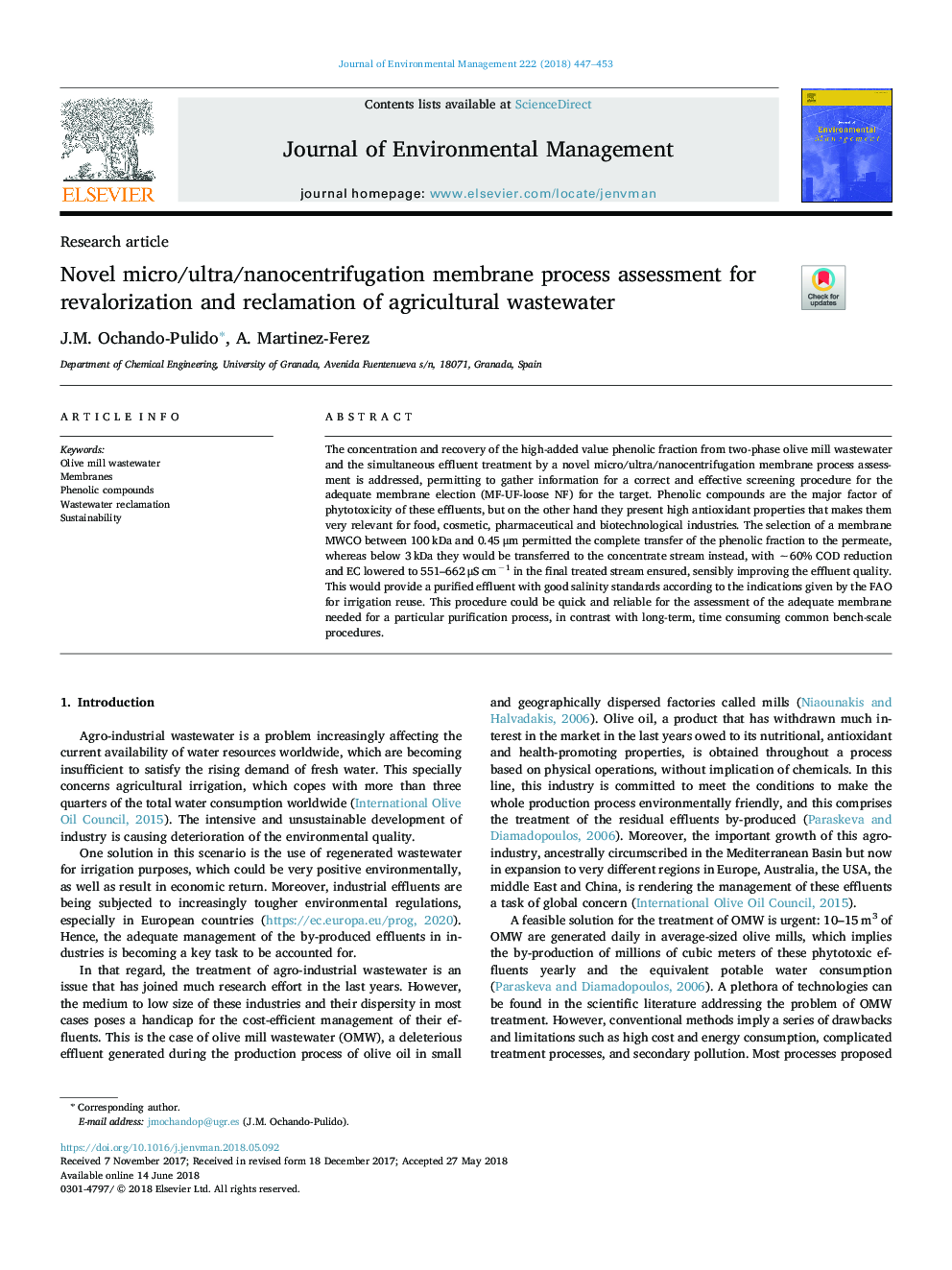| Article ID | Journal | Published Year | Pages | File Type |
|---|---|---|---|---|
| 7476334 | Journal of Environmental Management | 2018 | 7 Pages |
Abstract
The concentration and recovery of the high-added value phenolic fraction from two-phase olive mill wastewater and the simultaneous effluent treatment by a novel micro/ultra/nanocentrifugation membrane process assessment is addressed, permitting to gather information for a correct and effective screening procedure for the adequate membrane election (MF-UF-loose NF) for the target. Phenolic compounds are the major factor of phytotoxicity of these effluents, but on the other hand they present high antioxidant properties that makes them very relevant for food, cosmetic, pharmaceutical and biotechnological industries. The selection of a membrane MWCO between 100â¯kDa and 0.45â¯Î¼m permitted the complete transfer of the phenolic fraction to the permeate, whereas below 3â¯kDa they would be transferred to the concentrate stream instead, with â¼60% COD reduction and EC lowered to 551-662â¯Î¼Sâ¯cmâ1 in the final treated stream ensured, sensibly improving the effluent quality. This would provide a purified effluent with good salinity standards according to the indications given by the FAO for irrigation reuse. This procedure could be quick and reliable for the assessment of the adequate membrane needed for a particular purification process, in contrast with long-term, time consuming common bench-scale procedures.
Related Topics
Physical Sciences and Engineering
Energy
Renewable Energy, Sustainability and the Environment
Authors
J.M. Ochando-Pulido, A. Martinez-Ferez,
